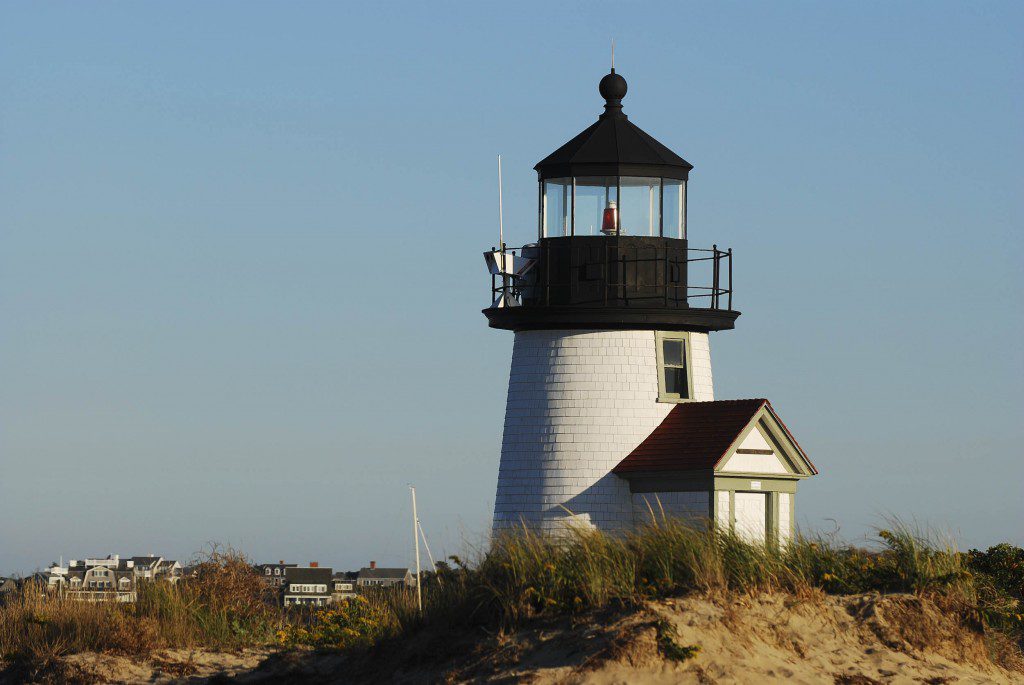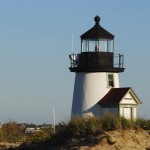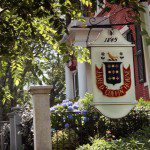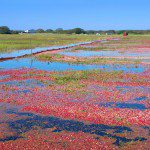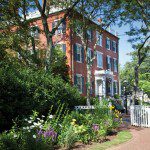Each summer, the population of Nantucket, Mass., swells. Between May and August, the island off the tip of Massachusetts absorbs more than 50,000 temporary “residents” – all eager to partake of one of the nation’s best locations for beaches and colonial history.
Yet, the “shoulder seasons” (as the early spring and fall are often called) are great times to visit; and autumn, some will tell you, is the best season to take in postcard-perfect Nantucket.
Hotels, inns and restaurants typically lower their rates from the summer dash, which makes exploring the island –14 miles long and 3.5 miles wide – even more attractive. Loaded with history, stories, amazingly preserved buildings and scenery that will make you think you’ve stepped into Herman Melville’s Moby Dick, Nantucket is a National Historic Landmark District.
A wealthy whaling superpower from the late 1600s through the first half of the 1800s, Nantucket owes part of its appeal today to a sandbar of silt that eventually formed in its harbor and prevented large whaling ships from entering. Also, by the middle of the 19th century, the whale oil trade declined, and many residents followed the market, the call of California gold and other opportunities to the mainland. And, a fire in 1846 destroying 40 acres of the town and the wharves forced others to leave. Many of the town’s remaining structures and homes were largely forgotten and isolated along with much of the island until developers in the 1950s began restoring them with goals to create an upscale vacation destination.
Nantucket – the name derived from a word believed to mean “faraway island” from the Wampanoag people, who were living there before English settlement – is no longer isolated, and neither is it only for the affluent. During the fall shoulder season, the weather is still warm enough for many of the attractions and outdoor activities such as boating, biking, fishing, bird-watching, beach combing and hiking for which it is famed.
Conservation
Nantucket’s rugged, natural beauty is prized for its diverse terrain – from salt marshes and beaches to small forests and ponds. The Coskata-Coatue Wildlife Refuge on the island’s northeastern edge features such variety and is a prime location for observing deer, birds and other wildlife, making it a popular attraction. Named for America’s first female astronomer, the Maria Mitchell Association is an organization with a history museum, space observatories, aquarium and a mission to prevent light pollution and study the area’s marine life. During tourist season, it offers hands-on science programs for all ages and an aquarium of locally collected specimens. Although its season ends Aug. 30 and most of the sea life are released the following day, MMA offers private and public programs through the year. Walking is strongly encouraged on the island, and the Nantucket Conservation Foundation opens public lands for a variety of recreation, including hiking, picnicking, fishing and sight-seeing. Protected lands include beaches, grasslands, cranberry bogs, woodlands and swamps.
Preservation
Nantucket was settled by the English after a merchant/missionary sold his original land deed to a group of investors in 1659. From there, buildings, houses and an industry were built. The Nantucket Whaling Museum, housed in a former candle factory, includes the 46-foot-long skeleton of a sperm whale, long boats, harpoons and portraits of seafarers and their families along with other items from the period of Nantucket’s seagoing dominance. The surprisingly well-intact Jethro Coffin House, located north of the town center, is the oldest residence on the island and was built in 1686 for the blacksmith and his wife as a wedding gift. Coffin was the grandson of Tristram Coffin, one of the island’s first white settlers. The restored African Meeting House stands as a silent reminder of the island’s African-American community in the 18th and 19th centuries. Visitors will discover the importance of the whaling industry to free blacks before the American Civil War and Nantucket’s role in the Abolitionist Movement. A young Frederick Douglass was invited to speak at the Nantucket Atheneum, built a year after the original was destroyed in the 1846 fire. Other notables who have spoken there are Ralph Waldo Emerson, Henry David Thoreau, Horace Greeley and Lucretia Mott. Other structures of note include Brant Point Light, built in 1746 and the second-oldest lighthouse in the U.S., and the Old Mill, also built in 1746 and the oldest functioning mill in the country.
Perspiration
Rent a bike and ride to the island’s many beaches. If you’re staying in town, beaches on Nantucket’s south side are but a few miles away. And you’ll find plenty of bike paths – more than 30 miles and mostly paved.
The calmer waters of Jetties Beach make it ideal for swimming and water sports in warm weather, which lingers in August and September. Constructed at the end of the 19th century, the granite jetties created to make a safe passage into the harbor still stand.
Surfside, a south-facing beach, is a leisurely two miles from town. Like nearby Miacomet and Cisco, the surf can be heavy as it faces the open Atlantic Ocean, but it’s a favorite for families looking to picnic or fly kites and play games.
Six miles away, riders discover Siasconset, located at the east shore. Visitors often find seals on the beach. Up the shore at Great Point, you’ll find some of the island’s best fishing along with a sweet view of the Great Point Lighthouse.
At A Glance
Access: Visitors reach Nantucket through Nantucket Memorial Airport, located on the south side of the island and open to charter flights such as JetBlue, United Express and Delta Connection. To arrive the old-fashioned way, visitors can make their way to the city of Hyannis on the Massachusetts mainland and ferry or steamship across Nantucket Sound. On-island transportation includes shuttle bus, taxi, rental car and bicycle.
Climate: Compared to the mainland, generally cooler in summer and warmer in winters thanks to the oceanic influence. Temperatures in August and September linger with highs in the 70s. Temperatures drop to upper 50s by late October.
Main attractions: Beaches, Brant Point Light, boating, Nantucket Reds clothing at Murray’s Toggery Shop.
Festival Time
12th Annual Cranberry Festival – Oct. 11: Guests can watch the harvest and learn the island’s history of cranberry farming at the Milestone Cranberry Bog, one of the last two commercial cranberry bogs on Nantucket. This year’s festival will also feature live entertainment, children’s activities, barbecue and agriculture tours. www.nantucketconservation.org.
Nantucket Maritime Festival – Sept. 20: Last year’s festival included tours of the island’s U.S. Coast Guard station and shellfish propagation lab along with oyster shucking contests, boat races, paddleboarding, harpoon throwing on the beach, aquatic touch tanks and dredging and net making demonstrations with the Egan Maritime Institute, “honoring Nantucket’s maritime traditions.” www.nantucketshipwreck.org
Nantucket Birding Festival – Oct. 16-19: The Linda Loring Nature Foundation hosts the fourth annual outing taking bird-watchers to locations often left off visitor’s guides. In addition to seeing some of the island’s native bird species, last year’s group got a glimpse of a “lost” Calliope hummingbird, North America’s smallest bird species native to the western half of the continent. www.llnf.org
Stay In Style
Historical: The Jared Coffin House, built in 1845 by the wealthy ship builder for which it’s named, is a three-story mansion that escaped the big fire in 1846. Located at the center of town, the inn combines traditional charm with 21st-century amenities, including Nantucket Prime, an upscale steakhouse. www.jaredcoffinhouse.com
Contemporary: If you’re the traveler who prefers to leave the history at the museum, the Veranda House’s contemporary décor and comforts are for you. Near the shore, the hotel’s “retro-chic” rooms overlook the harbor. Some rooms have private verandas to really enjoy those views. www.theverandahouse.com
Romantic: The Summer House Cottages grace Nantucket’s eastern shore in Siasconset. Facing the open Atlantic, the cottages offer the ultimate in privacy that extends to the private beach below the bluff. In its favor are tasteful shabby chic décor, dining and proximity to Sankaty Head Golf Course, open to nonmembers from October to May. www.thesummerhouse.com























